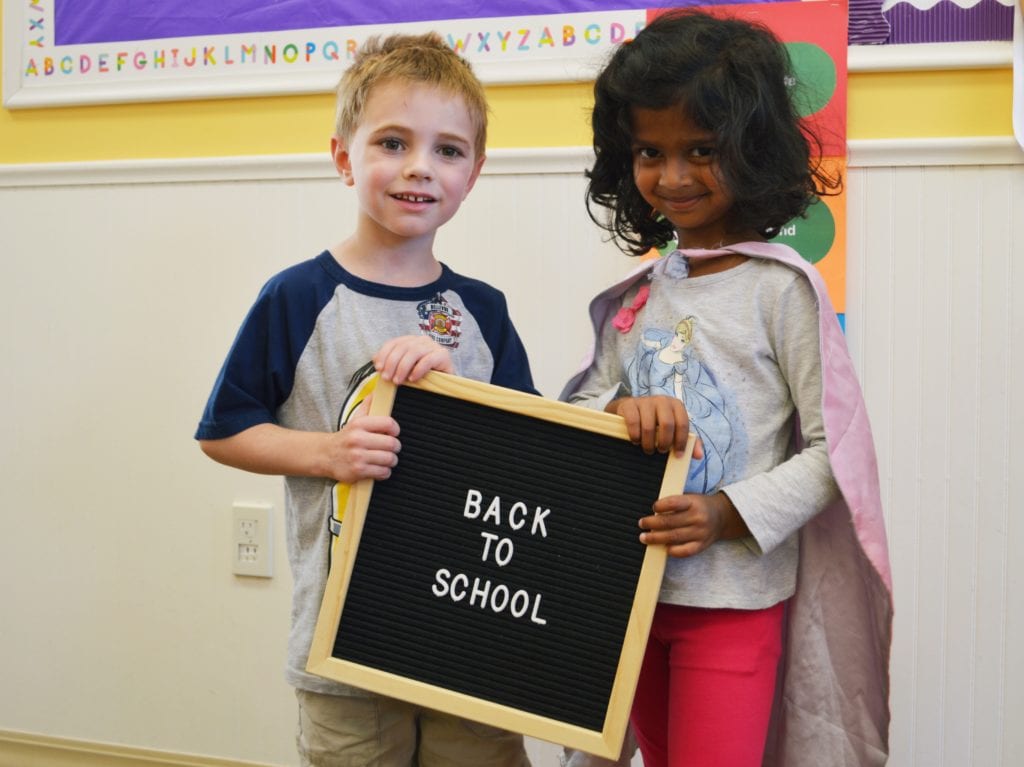August 27, 2019
3 Steps to ‘Be the Calm’ Through Back to School Emotions
Contributed by: Jennifer Horner, Director of Education

Back to school season is filled with BIG emotions, regardless of age. In early childhood education and the early school years, these feelings are usually more obvious (and sometimes explosive – especially in the toddler years) based on their still-developing ability to recognize, cope, and manage emotions. So what can we do to help ease children into new child care and school experiences?
1. Validate
As preschool teachers, caregivers and parents, we are typically the first witness, and source of calm and guidance, to emotional outbursts. Before letting stress and worry build up figuring out how to help your child, take a deep breath and use a simple phrase of validation.
“I see you’re feeling frustrated/sad/nervous/shy/anxious. Your eyes have tears and your mouth is making a frown. It is OK to feel that way.”
When delivered calmly and without a judgmental or disappointing tone, statements like these can have a positive and dramatic impact. Sometimes, when we simply describe how she’s feeling, she’s able to stop and begin to realize and process her emotion.

2. State the Expectation and Provide Choices
A young child’s ability to cope with feelings relies on us, as guiding adults, to give them appropriate options of what to do until they can regulate this on their own. When we give at least 2 choices, the child is given the power to choose versus being told what to do, nurturing a life-long habit of weighing out the options and making good decisions.
“It’s OK to feel nervous to walk into your new classroom, but it’s important to go to school. Would you like to wash our hands together at the sink first, find an animal book with snakes to look at, or show me everything in your back pack and put it away together in your cubby?”
For younger children, this may be pointing to options around the room, using one word phrases that are familiar to them, or communicating with pictures.

3. Patience and Praise
Young learners need time to process language so their response to validation and choices rarely happens quickly. It can take minutes before a child makes a decision because they’re busy processing feelings along with what they just heard. To help, we can repeat our statements, with long pauses in between, while being a source of calm and affection and giving words of affirmation (you are safe, I’m here to help you, etc.). Once they make a decision, providing praise, “Great choice!” is crucial in assuring the child they’re moving in the right direction.
Emotional regulation is a journey for young children and big emotions are to be expected. To help them along the way, let’s treat this time of transition as opportunities to teach versus moments to extinguish.
I love the articles linked below— they’re great resources if you’re looking to dive deeper into social-emotional development as it relates to back to school. Best wishes for meaningful teaching and learning in 2019-2020!
FURTHER RESOURCES:
The Future of Education Depends on Social-Emotional Learning and Here’s Why
Back to School: A Crucial Time for Kids Social and Emotional Development
Social Emotional Learning: What You Need to Know

 1.866.668.5111
1.866.668.5111  6:30 am - 6:00 pm
6:30 am - 6:00 pm 
 Give a Happy High Five!
Give a Happy High Five!



